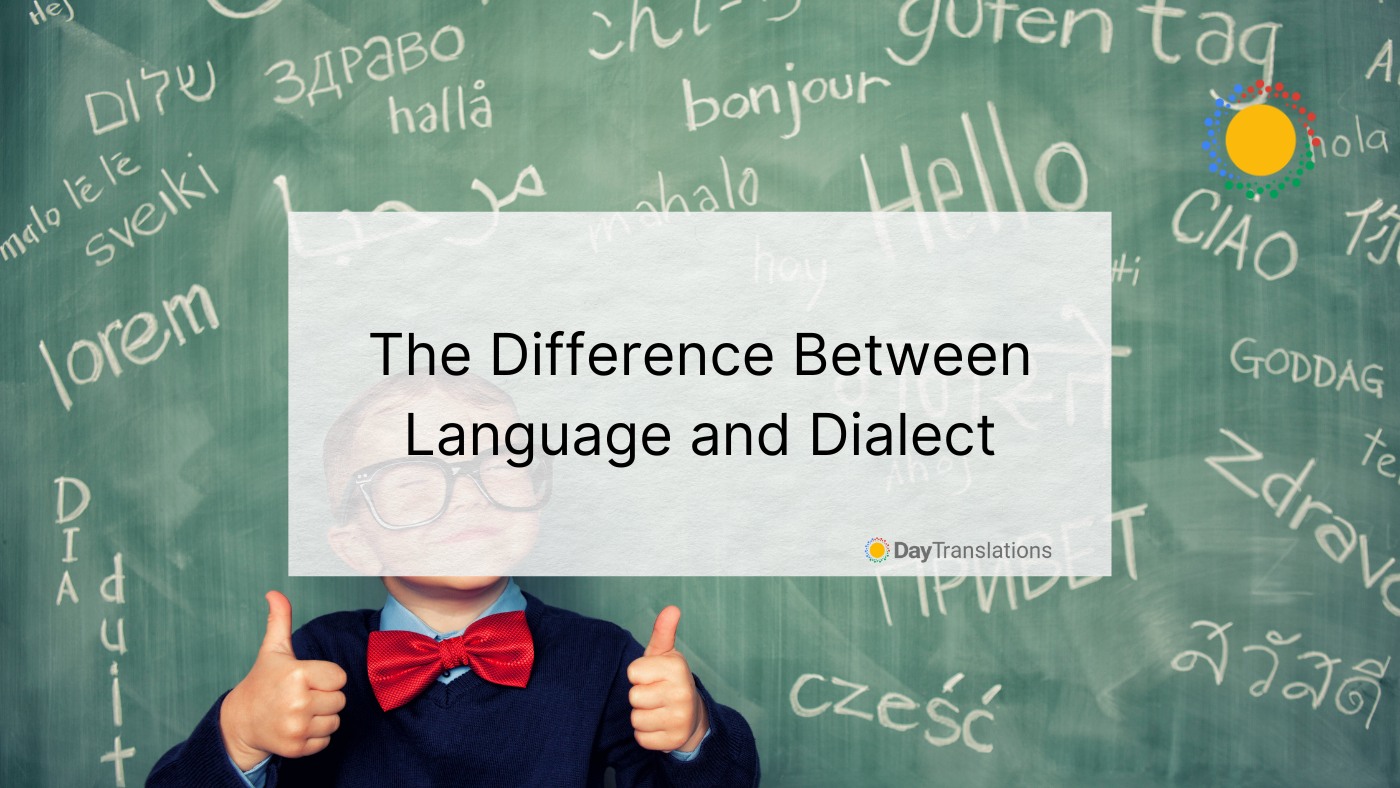In any scientific field, it’s always super important to use the correct terms when referring to specific things. And the same goes for the science of linguistics. The only problem is that some linguistic terms get a bit muddled by the public.
That’s why we’ve decided to clear up some confusion on the fundamental differences between languages and dialects!
The Difference Between Language and Dialect
Just to set the record straight, when we refer to ‘language,’ we’re not addressing the abstract sense of the topic. We’re taking a closer look at why Spanish is a language, but Spanglish is a dialect, just to give you an idea of what we’re addressing.
The best description of the difference between dialects and languages is one from the Yiddish scholar Max Weinreich who stated: “A language is a dialect with an army and a navy.” That pretty much defines the difference between dialects and languages because when something is called a language, it’s tied up with country borders, the number of people that speak the language, and a few other political considerations.
It’s obvious that languages like Afrikaans and Italian are clearly very different languages. But then again, there are many languages like Danish, Norwegian, and Swedish, which are all very close to each other. In fact, some languages have so many resemblances that they’re mutually intelligible.
Then there are the Chinese language dialects, which are not all mutually intelligible, yet they’ve earned titles as languages. So, in essence, there’s no scientific difference between languages and dialects. Some people argue that the most significant difference between the two is that dialects are just spoken, whereas languages are written and spoken.
It is important to note, however, that there’s a big myth about dialects and languages, and that’s the idea that language is considered the ideal way of talking. For example, Standard English is considered to be a language, and any other form of English is considered to be a dialect, a deviation from the ideal. But instead of imposing a hierarchy on languages, it’s best to look at language as one big umbrella for all the English dialects because there really isn’t one superior dialect.
The Deal with Accent
While there’s no scientific difference between language and dialect, there’s a much clearer divide when it comes to languages and accents. Still, there are a few disagreements among linguists on what exactly those differences are.
Generally, the terms’ accent’ and ‘dialect’ are used interchangeably. But accent is used much more often than dialect. Yet linguists state that accents are just one aspect of dialects. Accent refers to the way people pronounce words, but dialect is everything about the language. Dialects come with their own unique pronunciations, grammar, and vocabulary, and it’s used large groups of people.
There’s also another definition that’s used to explain the differences. It states that dialects are central to the way people speak their mother tongue, while accents revolve around the way they speak another language.
And Then There’s Variety
To avoid the messy lines that separate dialect and language, linguists choose to call it varieties instead. Variety refers to any variation in the language, and it also groups linguistics clusters together.
The English language, for example, has geographical varieties like Southern and Boston English. It also has social varieties like upper-class and middle-class. And then there are standard varieties like Standard English. Obviously, each individual also has his or her own varieties, which are called idiolects, and this refers to the unique way you speak.
Hungry for More Linguistic Learning?
Check out the Day Translations blog, where you’ll find explanations for the weirdest and most beautiful aspects of linguistics!












Sorry, the comment form is closed at this time.